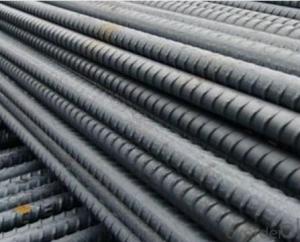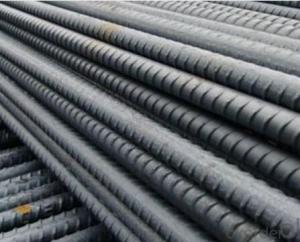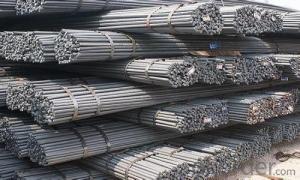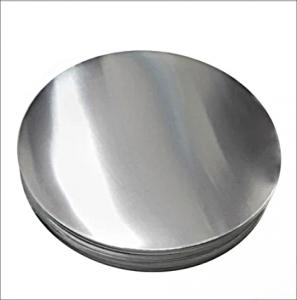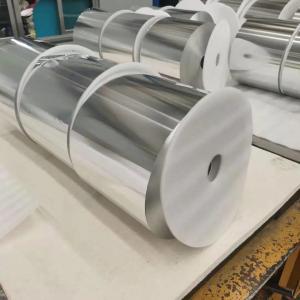Rebar Concrete Products - Hot Rolling Bar Rebar Coil 6mm-10mm
- Loading Port:
- Tianjin
- Payment Terms:
- TT OR LC
- Min Order Qty:
- 300 m.t.
- Supply Capability:
- 1500 m.t./month
OKorder Service Pledge
OKorder Financial Service
You Might Also Like
Building Material Hot Rolling Bar Rebar Coil 6mm-10mm
Main Structure of Rolling Bar
Standard: AISI, ASTM, BS, DIN, GB
Grade: HRB400
Diameter: 6mm-10mm
Length: 1.6-1.9ton/coil
Application: for construction
rebar coil size: 6mm-10mm
steel grade: hrb400 , hrb500, gr.60 , hrb335,q235 q255 q275
Description for Rolling Bar
Type | Coiled reinforced bar/rebar coil |
Steel Grade | hrb500, gr.60 ,q235 ,q255,q275 |
Size | 6mm-10mm |
Unit weight | 1.6-1.9tons/coil |
Application | Building/project construction |
Packing | In coil with steel strip ,in bulk . |
Content | C% | Mn% | Si% | Cr% | Ni% | S% | P% | Cr% |
HRB400 | 0.14-0.22 | 0.40-0.65 | 0.05-0.15 | 0.30max | 0.30max | 0.050 | 0.040 | 0.30min |
HRB400E | 0.14-0.22 | 0.40-0.65 | 0.15-0.30 | 0.30max | 0.30max | 0.050 | 0.040 | 0.30min |
HRB500 | 0.28-0.37 | 0.50-1.00 | 0.05-0.15 | 0.30max | 0.30max | 0.050 | 0.040 | 0.30min |
HRB500E | 0.28-0.37 | 0.50-1.00 | 0.15-0.30 | 0.30max | 0.30max | 0.050 | 0.040 | 0.30min |
FAQ
WHY SHOULD YOU CHOOSE US:
Stable quality ----continous casting hot rolled production techenic, strictly quality control system.
Lower price -------Not the cheapest but the lowest price at the same quality .
Good service -----Satisfactory service within 24hours.
Delivery time ------15-25days for the mass production .
Discount---------------discount base on monthly large quantity purchase in long term
Picture:

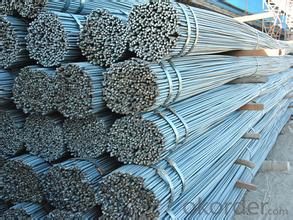
- Q:How do steel rebars affect the overall weight of a construction project?
- Steel rebars can have a significant impact on the overall weight of a construction project. Rebars are typically used to reinforce concrete structures, such as beams, columns, and foundations, to enhance their strength and durability. As steel rebars are made of high-strength steel, they add substantial weight to the project. The weight of steel rebars can affect various aspects of the construction project. Firstly, the total weight of the rebars needs to be considered during the design phase to ensure that the structure can support the additional load. This is particularly important when constructing high-rise buildings or structures that require heavy reinforcement. Additionally, the weight of steel rebars can impact transportation and logistics. As rebars are generally delivered to the construction site in large quantities, their weight can affect the choice of transportation methods, such as trucks or cranes, and may require special permits or equipment. The weight of rebars also adds to the cost of transportation. Moreover, the overall weight of the construction project affects the foundation requirements. The higher the weight of a structure, the stronger the foundation needs to be to support and distribute the load adequately. This may result in the need for deeper or wider foundations, which can increase costs and construction time. Lastly, the weight of steel rebars can impact the overall sustainability of a construction project. Since the production of steel involves significant energy consumption and emissions, the increased weight of rebars can contribute to a higher carbon footprint. Therefore, it is essential for construction projects to find a balance between reinforcement needs and environmental considerations. In conclusion, steel rebars have a tangible impact on the overall weight of a construction project. Their weight affects the design, transportation, foundation requirements, and sustainability of the project. It is crucial for architects, engineers, and project managers to carefully consider the weight of steel rebars to ensure the structural integrity and efficiency of the construction project.
- Q:What is the effect of steel rebars on the durability of concrete structures?
- Steel rebars have a significant effect on the durability of concrete structures. When used as reinforcement within the concrete, rebars enhance the strength and longevity of the structure. Concrete on its own is strong in compression but weak in tension. By incorporating steel rebars, which have high tensile strength, into the concrete, the overall structural integrity is greatly improved. The presence of rebars in concrete mitigates the potential for cracking and structural failure. When subjected to external forces or natural phenomena like earthquakes or temperature fluctuations, the rebars distribute the load and help resist bending, shearing, and tension forces. This prevents the occurrence of cracks and ensures that the concrete structure remains intact and stable. Furthermore, steel rebars also protect the concrete from corrosion. Concrete is susceptible to moisture and chemicals that can penetrate its surface and lead to the corrosion of embedded reinforcement. However, rebars act as a protective barrier, preventing moisture and harmful substances from reaching the concrete and causing corrosion. This extends the lifespan of the structure and reduces maintenance and repair costs. In summary, the inclusion of steel rebars in concrete structures significantly enhances their durability. They provide increased strength, resistance to external forces, and protection against corrosion. The combination of concrete and steel rebars creates a robust and long-lasting structure that can withstand various environmental and structural challenges.
- Q:How are steel rebars used in the construction of tunnels and underground passages?
- Steel rebars are used in the construction of tunnels and underground passages to reinforce the concrete structures. They are embedded within the concrete to increase its strength and prevent cracking or collapsing under the pressure exerted by the surrounding soil or water. The rebars provide structural integrity and durability, ensuring the tunnels and passages can withstand the forces and stresses they encounter.
- Q:Are steel rebars eco-friendly?
- Steel rebars are not considered to be inherently eco-friendly due to their production process and the extraction of raw materials required. The production of steel involves the extraction of iron ore, which requires significant energy and resources. Additionally, the process emits large amounts of carbon dioxide, contributing to greenhouse gas emissions and climate change. However, it is worth noting that steel rebars have a long lifespan and can be recycled, which helps reduce the environmental impact. Recycling steel requires significantly less energy and resources compared to producing it from scratch, and it helps conserve natural resources and decrease waste. Furthermore, steel rebars are commonly used in construction projects due to their strength and durability. Their use can lead to the construction of long-lasting structures that require fewer repairs and replacements over time. This durability aspect can contribute to a reduction in overall environmental impact. To summarize, while steel rebars are not eco-friendly in terms of their production process, their longevity and recyclability can help reduce their environmental impact when compared to alternative construction materials.
- Q:Can steel rebars be used in seawater desalination plants?
- Yes, steel rebars can be used in seawater desalination plants, but it is important to consider the corrosion potential of steel in a saline environment. Proper corrosion protection measures, such as using corrosion-resistant coatings or stainless steel rebars, should be implemented to ensure the longevity and structural integrity of the plant.
- Q:What is the average diameter of steel rebars used in construction?
- The average diameter of steel rebars used in construction typically ranges from 6 to 32 millimeters.
- Q:What is the composition of steel rebars?
- Steel rebars are primarily composed of carbon, manganese, and small amounts of other elements such as sulfur and phosphorus. The main component, carbon, gives steel rebars their strength and durability, while manganese helps improve their overall toughness and workability.
- Q:What is the effect of exposure to chemicals on the durability of steel rebars?
- Exposure to chemicals can have a detrimental effect on the durability of steel rebars. Chemicals, such as acids or salts, can lead to corrosion and the formation of rust on the surface of rebars. This corrosion weakens the structure and compromises its integrity, reducing the lifespan and load-bearing capacity of the rebars. Regular inspection, maintenance, and protective coatings are crucial to mitigate the negative impact of chemical exposure and ensure the long-term durability of steel rebars.
- Q:How are steel rebars specified in construction drawings?
- In construction drawings, steel rebars are specified using a combination of symbols, labels, and dimensions. These specifications provide detailed information about the size, shape, and placement of the rebars within the concrete structure. The specifications for steel rebars typically include the following information: 1. Rebar Size: The diameter of the rebar is specified using a numerical value, such as 8, 10, 12, etc., which indicates the bar size in millimeters or inches. 2. Rebar Shape: The shape of the rebar can be specified using symbols or abbreviations, such as "D" for deformed or "SD" for smooth and deformed. 3. Rebar Spacing: The spacing between rebars is typically specified using a numerical value, such as 150, 200, or 300, which indicates the distance between the centerlines of adjacent rebars in millimeters or inches. 4. Rebar Bending: If rebars need to be bent to a specific shape, the bending details are often included in the construction drawings. This includes the angle and radius of the bend, as well as the location at which the bending is required. 5. Rebar Placement: Construction drawings typically include plans, sections, and elevations that show the precise location and arrangement of the rebars within the concrete structure. These drawings may include details such as the number of rebars, their orientation, and their position relative to other elements of the structure. 6. Rebar Schedule: A rebar schedule is often provided in construction drawings, which summarizes all the specifications for each rebar element in a tabular format. This includes information such as the rebar mark, size, length, weight, and any special instructions. Overall, the specifications for steel rebars in construction drawings ensure that the rebars are correctly fabricated, installed, and integrated into the concrete structure, meeting the design requirements and ensuring the structural integrity and safety of the building.
- Q:Can steel rebars be used in modular construction?
- Yes, steel rebars can be used in modular construction. Steel rebars are commonly used as reinforcement in concrete structures, and since modular construction often involves the use of concrete elements, rebars can be incorporated to enhance the structural integrity of the modules.
1. Manufacturer Overview |
|
|---|---|
| Location | |
| Year Established | |
| Annual Output Value | |
| Main Markets | |
| Company Certifications | |
2. Manufacturer Certificates |
|
|---|---|
| a) Certification Name | |
| Range | |
| Reference | |
| Validity Period | |
3. Manufacturer Capability |
|
|---|---|
| a)Trade Capacity | |
| Nearest Port | |
| Export Percentage | |
| No.of Employees in Trade Department | |
| Language Spoken: | |
| b)Factory Information | |
| Factory Size: | |
| No. of Production Lines | |
| Contract Manufacturing | |
| Product Price Range | |
Send your message to us
Rebar Concrete Products - Hot Rolling Bar Rebar Coil 6mm-10mm
- Loading Port:
- Tianjin
- Payment Terms:
- TT OR LC
- Min Order Qty:
- 300 m.t.
- Supply Capability:
- 1500 m.t./month
OKorder Service Pledge
OKorder Financial Service
Similar products
New products
Hot products
Hot Searches
Related keywords









